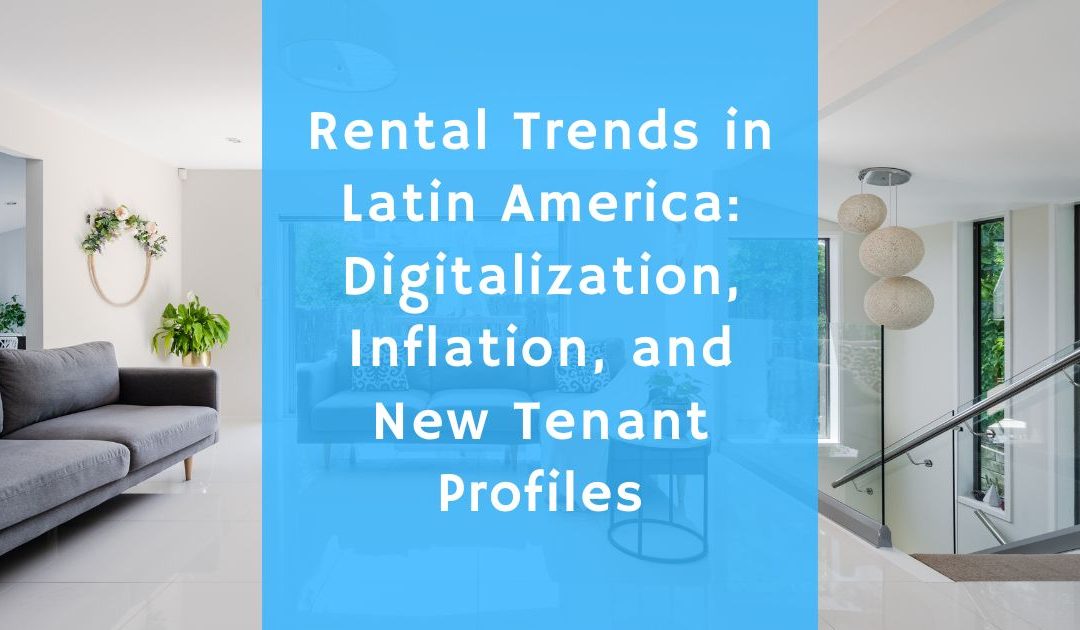The rental housing market in Latin America is undergoing an unprecedented transformation. For decades, renting a home has been a traditionally slow, informal process based largely on subjective criteria. However, in recent years — especially accelerated by the pandemic — a structural shift has taken place in the way people rent, manage, and evaluate properties.
Today’s rental trends in Latin America reflect the convergence of several powerful forces. The rise of digitalization, ongoing economic pressure due to inflation, and the emergence of new tenant profiles are reshaping the region’s real estate landscape. Landlords, property managers, and insurers now face the challenge of adapting to an environment where technology, financial volatility, and changing social dynamics are setting the pace.
On one hand, digital tools have entered the scene with full force, offering solutions that automate processes, reduce risks, and enable faster, more reliable decision-making. On the other, inflation and financial uncertainty are pushing stakeholders to be more cautious, data-driven, and efficient. At the same time, new types of tenants are emerging, with behaviors and priorities that differ from those of traditional renters — prioritizing flexibility, convenience, and digital-first experiences over long-term ownership.
In this article, we explore the key rental trends in Latin America — from technological adoption to economic pressures and shifting tenant expectations — that are defining the present and shaping the future of the regional rental market. Understanding these trends is essential for anyone looking to stay ahead in a rapidly evolving real estate landscape.

Rental Trends in Latin America: Digitalization of the Rental Process
Technology has become a key ally in the real estate sector. In recent years — especially after the pandemic — we’ve seen a rapid adoption of digital solutions aimed at simplifying, automating, and bringing greater transparency to the rental process:
-
Virtual tours, digital contracts, and online payments are now part of everyday life in many cities.
-
Proptech platforms are making it easier for landlords and tenants to connect without relying on traditional intermediaries.
-
Evaluation algorithms, such as SmartRentScore, enable faster and less biased decisions by analyzing a tenant’s potential risk in just minutes.
Digitalization not only improves the user experience — it also helps reduce the informality that has historically characterized the rental market in the region.
Inflation and Pressure on Rental Prices
Inflation continues to be one of the main economic challenges in many Latin American countries. This has direct impacts on the rental market:
-
Rent increases outpacing wage growth, reducing tenants’ ability to pay.
-
Landlords becoming more cautious about signing long-term or fixed-term contracts.
-
Growing interest in rental insurance models and digital guarantees that protect both parties against potential defaults.
In this context, being able to accurately assess a tenant’s financial reliability is more important than ever.
New Tenant Profiles and Sociocultural Shifts
The concept of the “typical tenant” is changing. It’s no longer just about traditional families looking for long-term stability. Today, we’re seeing:
-
Young professionals and digital nomads, who prioritize flexibility and bundled services (such as coliving, furnished rentals, and short-term contracts).
-
Internal and external migrants, seeking affordable rentals without a solid financial history.
-
Generations that prefer renting over buying, whether for economic, philosophical, or lifestyle reasons.
This growing diversity presents new challenges for landlords — but it also opens the door to a more targeted and adaptive rental offering.

The rental trends in Latin America are evolving rapidly, driven by the convergence of digital innovation, economic challenges, and shifting social behaviors. This transformation is reshaping how rental decisions are made, how risks are assessed, and what tenants expect from the rental experience.
In this new landscape, technology is no longer a nice-to-have — it’s a necessity. Platforms that incorporate artificial intelligence, real-time risk scoring, and digital onboarding are helping landlords, insurers, and property managers make better decisions faster. At the same time, these tools contribute to reducing the historical informality that has limited growth and transparency in the Latin American rental market.
As inflation continues to impact affordability and as new tenant profiles emerge — from digital nomads to younger generations choosing to rent over buy — the need for adaptable, data-driven rental processes becomes even more critical. Those who understand and respond to these rental trends in Latin America will be in a stronger position to thrive in a more competitive, fluid, and tech-enabled ecosystem.
At Kaizen Blitz Analytics, we believe in empowering the real estate ecosystem with tools that bring clarity, speed, and trust to the rental process.
Want to know how algorithms can help you evaluate tenant reliability in just minutes? Discover how SmartRentScore and KBA.Suite can support your decision.

